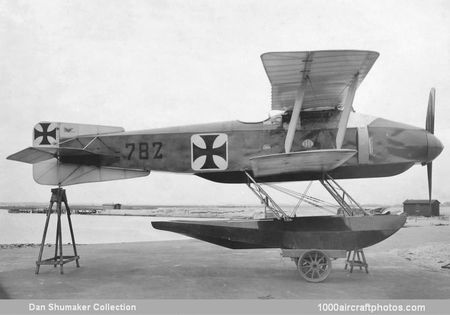The most revolutionary feature of the design, was its retractable float landing gear, in an attempt to overcome the inherent disadvantages of drag and maneuverability which attended floatplanes generally and fighters in particular. The pilot manually operated a small differential winch which reduced the lengths of the bracing cables on one diagonal of the landing gear struts and lengthened corresponding cables on the other diagonal, allowing the floats to be cranked to the 'up' position (site files). They were retracted forward against the airflow; this kept the center of gravity forward and also assisted with float extension.
In the event, the estimated top speed of 124 mph (200 kmh) was never achieved, since during initial taxiing trials at 900 rpm in late April 1917 the machine nosed over. After further investigation the design was abandoned."
